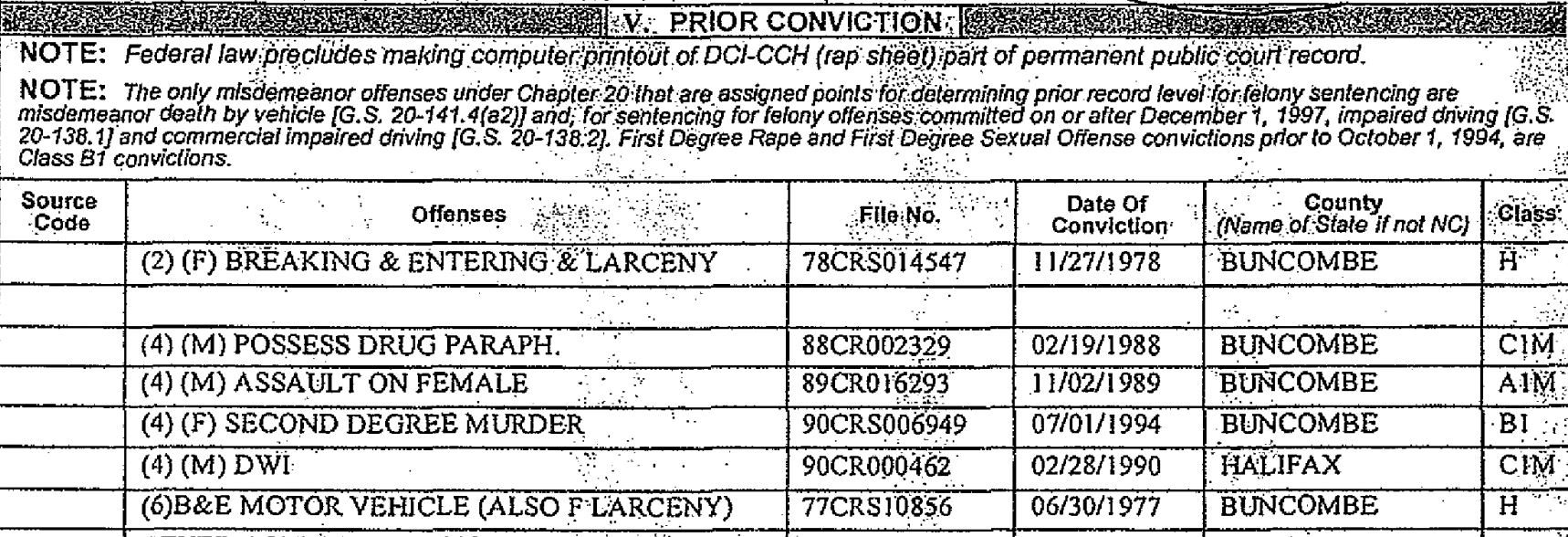In a previous post I wrote about State v. McNeil, a case that resolved the question of how to count prior convictions for possession of drug paraphernalia, in light of that crime’s 2014 division into Class 1 (non-marijuana) and Class 3 (marijuana) offenses. Today’s post is about prior convictions for second-degree murder—split into Class B1 and Class B2 varieties in 2012—in light of State v. Arrington, a case recently decided by the supreme court.
I wrote about Arrington here when the court of appeals issued its decision in the case. In Arrington, a defendant being sentenced for a crime committed in 2013 had a prior conviction for second-degree murder from July of 1994. Second-degree murder was a Class C felony under Fair Sentencing when the defendant committed the crime. But, under G.S. 15A-1340.14(c), a person’s prior convictions are generally “modernized” and counted for points according to their offense class as of the offense date of the crime now being sentenced.
The issue in Mr. Arrington’s case was that by the time he committed his present offense (in 2013), the General Assembly had created two possible offense classifications for second-degree murder. Effective December 1, 2012, second-degree murder became a Class B1 felony, except it is punished as a Class B2 felony in two circumstances: (1) when malice is based on an inherently dangerous act or omission, done in such a reckless and wanton manner as to manifest a mind utterly without regard for human life and social duty and deliberately bent on mischief, and (2) when the murder is proximately caused by the unlawful distribution and ingestion of certain controlled substances. Given that subsequent bifurcation, it was unclear how to apply G.S. 15A-1340.14(c) for a prior conviction committed back when there was only one type of second-degree murder.
In the trial court, the parties resolved the question by stipulation. The defendant stipulated to a prior record level worksheet that treated the prior second-degree murder as a Class B1 felony, and thus counted it for 9 points. The defendant appealed.

The court of appeals concluded over a dissent that the stipulation was improper to the extent that it purported to resolve the legal question of whether the defendant’s prior second-degree murder would be Class B1 or B2 under the revised law. As noted in many appellate cases, a defendant can stipulate to questions of fact, but stipulations to questions of law are generally ineffective. (The most common subject of improper stipulations in recent years is the question of “substantial similarity” of out-of-state prior convictions for prior record level purposes.) The State filed notice of appeal based on the dissent.
In a divided opinion, the supreme court reversed the court of appeals, concluding that the defendant’s stipulation to the B1 classification was valid. While the ultimate classification of a prior conviction is a legal determination, that classification is, the court reasoned, “fact driven.” Slip op. at 5. The defendant’s stipulation was an admission that certain past conduct constituted a criminal offense. And by stipulating to the second-degree murder as a Class B1 felony, the defendant “simply agreed that the facts underlying his second-degree murder conviction, of which he was well aware, fell within the general B1 category because the offense did not involve either of the two factual exceptions recognized for the B2 classification.” Id. at 10.
Having accepted the validity of the defendant’s stipulation, the court sent the case back down for reinstatement of the original trial court judgment.
Justice Ervin, joined by Justice Hudson and Justice Beasley, dissented. They would have concluded that the ultimate question of offense classification is indeed a question of law to which the defendant may not stipulate.
After Arrington, defendants with pre-2012 prior convictions for second-degree murder can validly stipulate to whether those convictions would be of the Class B1 or B2 variety today, and thus whether they should count for 9 or 6 prior record points. But of course they do not have to do that. And if they don’t, it’s not really clear how the sentencing judge should treat them. The State bears the burden of proving the defendant’s prior convictions. And if it doesn’t establish that the second-degree murder wasn’t one of the Class B2 varieties (apologies for the double negative), I would think a defendant would have a decent argument that the court should count it for Class B2 points. That is essentially what happened in McNeil, where the court of appeals said pre-2014 prior convictions for possession of drug paraphernalia are presumed to be Class 3 unless the State establishes that they didn’t involve marijuana. (Note, however, that the supreme court allowed the State’s motion for a temporary stay in McNeil last week.)
Thanks for your research. McNeil will be interesting.